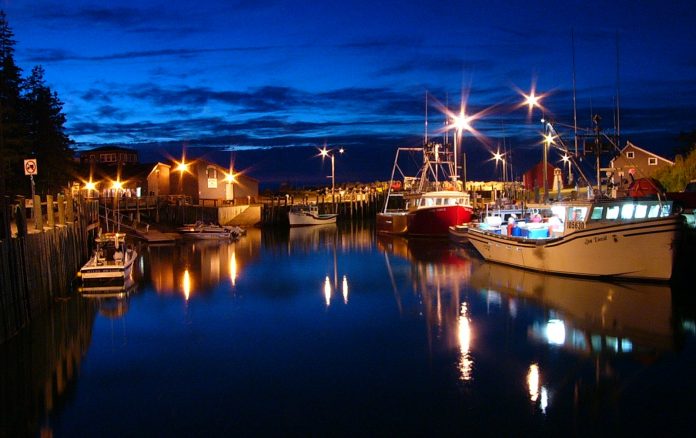One way that marine researchers catch deep-sea organisms that would be difficult to capture by any other means is by lighting the surface of the sea and waiting to see what emerges from the darkness below.
Indeed, this can the the most exciting part of a research cruise. Squid and various small bait fish usually show. But by using clip nets in the illuminated area, scientifically important juvenile specimens of many large fish, such as marlins and lancet fish, have been taken.
Related Articles:
-
Aerial Fishing
-
Night Knife Fishing With a Khukari Knife in Nepal
-
Sea Trout Fishing (Salmo trutta)
-
How to Locate Trout
-
Other Fishing Articles
Night lights are routinely used on angling head boats that fish overnight at sea. When done correctly, the illuminated area around the vessel may have a mix of bait fish and squid that draws tuna and dolphin fish.
Lights may also be used creatively for survival or augmentations fishing. Off Mombasa, the crew of a destroyer on a thirty-day cruise and tired of navy grub simply hung a lamp off a gun turret, resulting in flying fish all over the deck.
Night-light fishing is not without its hazards, though. The needle fish and hound fish that are gathered purposely in places by torchlight may leap and wound the vessel’s crew. And once while dip-netting from the dive platform of a research vessel at a nightlight station, a scientist moved with uncommon speed when a large sea snake slithered up to his feet.













